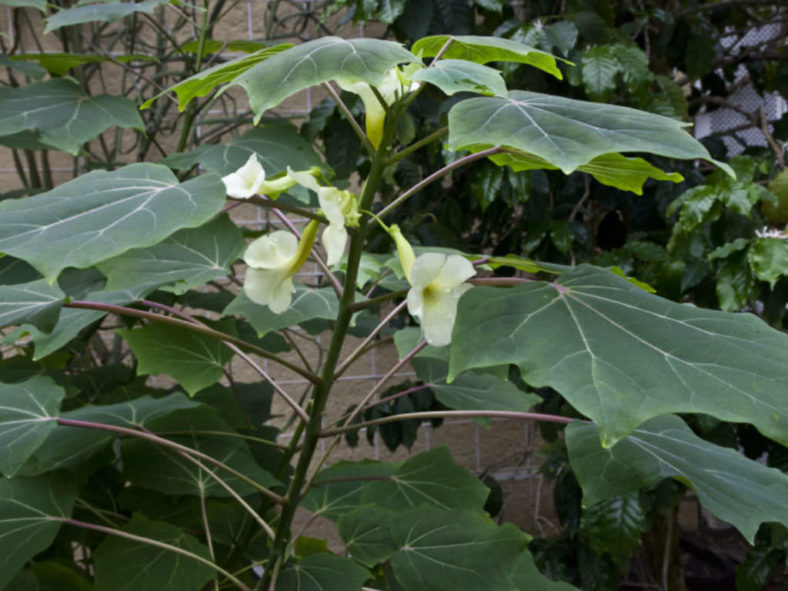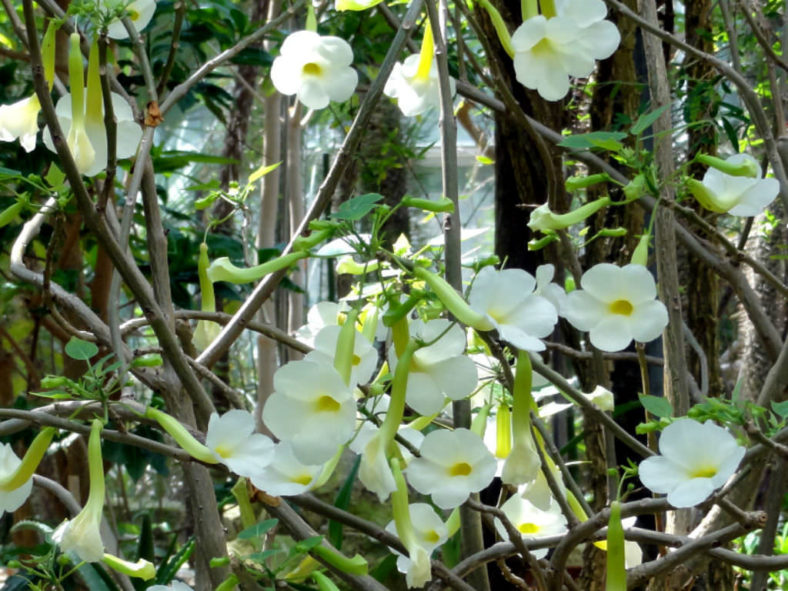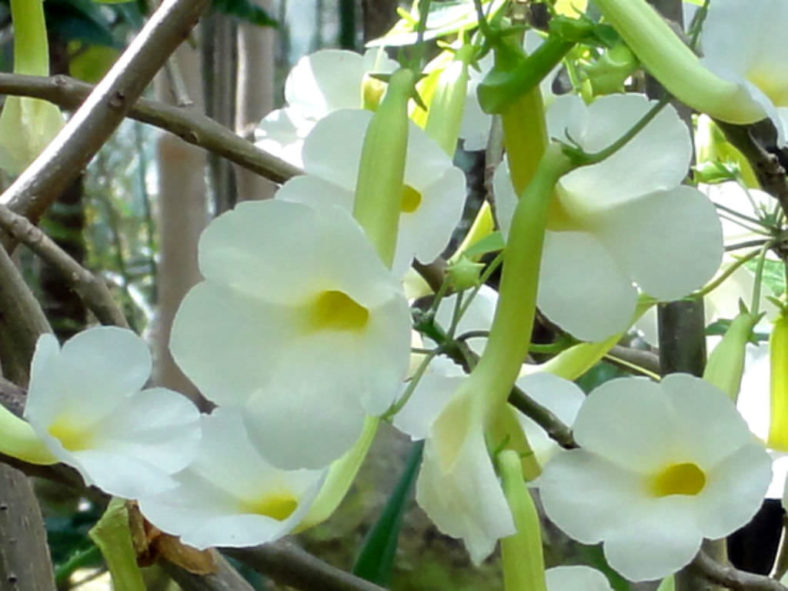Scientific Name
Uncarina leptocarpa (Decne.) Ihlenf. & Straka
Synonym(s)
Harpagophytum leptocarpum, Uncaria leptocarpa
Scientific Classification
Family: Pedaliaceae
Genus: Uncarina
Etymology
The specific epithet "leptocarpa" (pronounced "lep-toh-KAR-puh") means "slender-fruited" and refers to the fruits of this species, which have a long, narrow, oblong beak.
Origin
Uncarina leptocarpa is native to Madagascar. It grows in calcareous soil over limestone beds.
Description
Uncarina leptocarpa is a large, tropical shrub or a small, caudiciform tree with a trunk and a dense crown of overhanging branches with green, finely hairy leaves. It can grow up to 25 feet (7.5 m) tall, while the trunk can reach a diameter of 12 inches (30 cm). The leaves are pentagonal to slightly palmate, measuring up to 5.2 inches (13 cm) in length and 5.6 inches (14 cm) in width. They are deciduous during the winter resting season.
The flowers are white with yellow centers and appear on long pedicels and in the axils of upper leaves in summer. The fruits are laterally strongly compressed, egg-shaped when viewed from the side, with spines in two different shapes and a long, narrow, elongated beak. They can grow up to 2 inches (5 cm) long and 1.2 inches (3 cm) wide. The hooked spines can measure up to 0.6 inches (1.5 cm) and are typically arranged in rows of five, not extending beyond the beak. The numerous simple spines are about 0.15 inches (0.3 cm) long and often underdeveloped.

Hardiness
USDA hardiness zone 10b to 11b: from 35°F (1.7°C) to 50°F (10°C).
How to Grow and Care
One reason that Uncarinas are not common in cultivation is that the seed does not germinate easily. Propagation by cuttings is not a substitute because they do not root easily either. In short, Uncarina is a difficult plant to propagate.
But once you have managed to get yourself one, it is relatively easy to grow. It needs plenty of warmth and water in the growing season, but keep it dry in the winter. They can grow up to 13 feet (4 m) in the wild, but don't expect them to reach that height in your greenhouse or windowsill.
Uncarinas are tender and cannot endure temperatures below 35°F (2°C). If grown outdoors, they will probably regrow from the roots if frozen. They are quite heat-tolerant. Uncarina needs rich, very well-drained potting soil. Use diluted fertilizer on young plants to speed up growth. This plant blooms easily, and it is striking when covered with flowers. The seed capsules feature small hooked harpoons.
See more at How to Grow and Care for Uncarina.
Links
- Back to genus Uncarina
- Succupedia: Browse succulents by Scientific Name, Common Name, Genus, Family, USDA Hardiness Zone, Origin, or cacti by Genus
Photo Gallery
Click on a photo to see a larger version.

